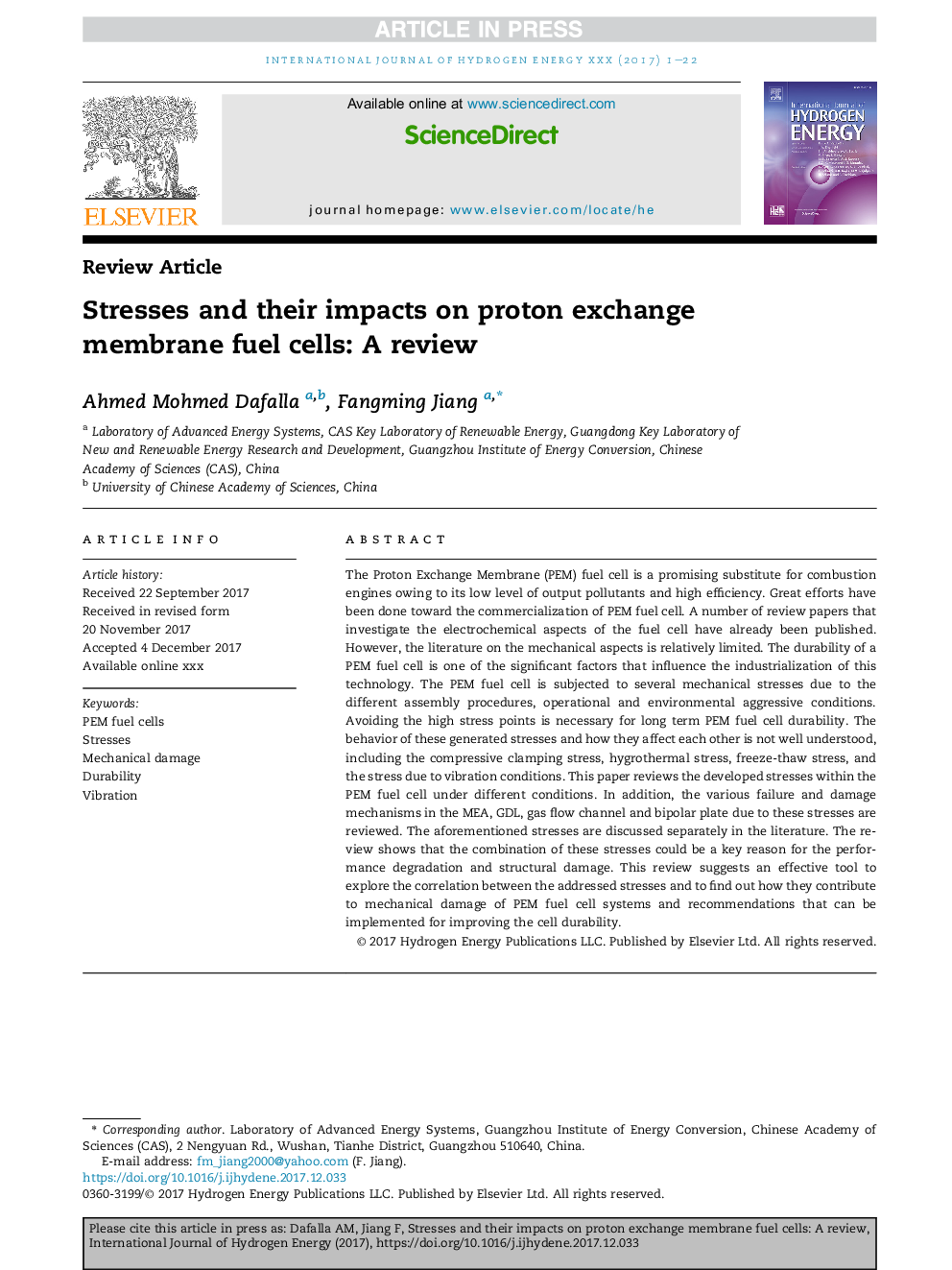| Article ID | Journal | Published Year | Pages | File Type |
|---|---|---|---|---|
| 7708263 | International Journal of Hydrogen Energy | 2018 | 22 Pages |
Abstract
The Proton Exchange Membrane (PEM) fuel cell is a promising substitute for combustion engines owing to its low level of output pollutants and high efficiency. Great efforts have been done toward the commercialization of PEM fuel cell. A number of review papers that investigate the electrochemical aspects of the fuel cell have already been published. However, the literature on the mechanical aspects is relatively limited. The durability of a PEM fuel cell is one of the significant factors that influence the industrialization of this technology. The PEM fuel cell is subjected to several mechanical stresses due to the different assembly procedures, operational and environmental aggressive conditions. Avoiding the high stress points is necessary for long term PEM fuel cell durability. The behavior of these generated stresses and how they affect each other is not well understood, including the compressive clamping stress, hygrothermal stress, freeze-thaw stress, and the stress due to vibration conditions. This paper reviews the developed stresses within the PEM fuel cell under different conditions. In addition, the various failure and damage mechanisms in the MEA, GDL, gas flow channel and bipolar plate due to these stresses are reviewed. The aforementioned stresses are discussed separately in the literature. The review shows that the combination of these stresses could be a key reason for the performance degradation and structural damage. This review suggests an effective tool to explore the correlation between the addressed stresses and to find out how they contribute to mechanical damage of PEM fuel cell systems and recommendations that can be implemented for improving the cell durability.
Related Topics
Physical Sciences and Engineering
Chemistry
Electrochemistry
Authors
Ahmed Mohmed Dafalla, Fangming Jiang,
